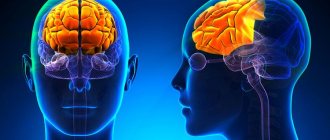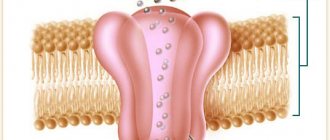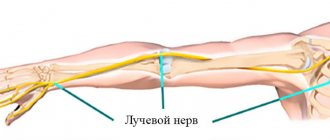Home / Cardiologist / Treatment of vascular crises
Vascular crisis is a pathological condition characterized by a sudden change in the blood supply of blood vessels in combination with a violation of peripheral and central circulation. The term “crisis” itself denotes a sharp manifestation of the disease, so they always develop acutely, in the form of an attack or attack.
Diseases in which vascular crisis occurs:
- migraine;
- vegetative paroxysms;
- acute angioedema (Quincke's edema);
- arterial hypertension;
- angiotrophoneurosis.
What is hypothalamic syndrome?
Hypothalamic syndrome is a symptom complex of damage to the hypothalamic region, characterized by autonomic, endocrine, metabolic and trophic disorders.
Various stressful situations, psychotraumatic effects, intoxication, traumatic brain injuries, vascular diseases, tumors, acute infections (influenza, ARVI (ARI), pneumonia, viral neuroinfections), chronic infections (cholecystitis, sinusitis, tonsillitis) play a significant role in the occurrence of hypothalamic syndrome. , rheumatism, tuberculosis). Increased vascular permeability of the hypothalamus can facilitate the penetration of toxins and viruses from the blood into the brain, and displacement of cerebrospinal fluid during traumatic brain injury can cause hypothalamic dysfunction. The occurrence of hypothalamic syndrome is also facilitated by hereditary and acquired constitutional defects of the hypothalamus and closely related structures of the limbic-reticular complex (limbic system and reticular formation) and the pituitary gland. Often, the pathological course of pregnancy and childbirth can be one of the factors of improper formation and maturation of the hypothalamus at various stages of fetal ontogenesis.
Sympathoadrenal crisis
Sympathoadrenal crisis in hypothalamic syndrome is manifested by severe headache, pain in the heart, palpitations, a feeling of fear, palpitations, a feeling of fear, difficulty breathing, numbness of the extremities. During a crisis, the skin is pale, dry, blood pressure (BP) is elevated, there may be slight hyperthermia (37.0; 37.1; 37.2; 37.3; 37.4; 37.5; 37.6; 37.8 ; 37.9 degrees Celsius), dilated pupils, increased erythrocyte sedimentation rate (reaction) (ESR, ROE), hyperglycemia (increased blood glucose levels). The attack often ends with chills, frequent urination (pollakiuria) or a single copious discharge of urine (polyuria).
3. Symptoms and diagnosis
The clinical picture of Addisonian crisis usually develops rapidly and includes the following manifestations:
- failure of blood pressure (hyperhidrosis, arrhythmia, cold extremities, general weakness, etc.);
- muscle pain;
- intense abdominal pain and dyspepsia (nausea, vomiting, diarrhea);
- symptoms of dehydration and increasing renal failure;
- successive changes in pathological states of consciousness - hallucinatory experiences, fainting, and then coma.
By this time, the ambulance should at least have already been called.
A presumptive diagnosis is established clinically and anamnestiically (if someone was present during the development of the crisis and can provide the doctor with significant information). Differential express diagnostics are carried out, primarily with conditions of acute abdomen, acute heart failure, intoxication with lead compounds, etc. The patient is hospitalized urgently. The diagnosis is finally confirmed by biochemical and hormonal blood tests.
About our clinic Chistye Prudy metro station Medintercom page!
Neuroendocrine-metabolic form | Hypothalamic syndrome
The neuroendocrine-metabolic form of the hypothalamic syndrome is characterized mainly by endocrine disorders due to loss or increased secretion of hormones of the anterior pituitary gland.
The following diseases may occur.
Diabetes insipidus
1) diabetes insipidus (polyuria, polydipsia, dry mouth, general weakness);
Adiposogenital dystrophy
2) adiposogenital dystrophy - Pechkranz-Babinsky-Fröhlich syndrome (nutritional obesity, increased appetite, hypogenitalism, general weakness, various endocrine disorders);
Frontal hyperostosis
3) frontal hyperostosis - Morgagni-Stewart-Morel syndrome (hyperostosis of the internal plate of the frontal bone, amenorrhea, obesity, virilism);
Juvenile basophilism
4) juvenile basophilism - prepubertal basophilism (obesity, increased blood pressure / arterial hypertension /, stretch marks / stretch marks / on the skin;
Pituitary cachexia
5) pituitary cachexia - hypothalamic-pituitary cachexia, panhypopituitarism, Simmonds syndrome (rapid decrease in body weight by 1.5 - 2 times with the development of cachexia / exhaustion /;
Malignant exophthalmos
6) malignant exophthalmos - exophthalmic ophthalmoplegia (slowly progressive exophthalmos without thyrotoxicosis, at first it can be one-sided, oculomotor disorders, more often external ophthalmoplegia, diplopia, possible keratitis, atrophy of the optic discs);
Precocious puberty
7) premature puberty (pubertas praecox) - more often manifested in girls by the early development of secondary sexual characteristics, often combined with the following symptoms: high growth, bulimia, polydipsia, polyuria, sleep disturbance (insomnia), changes in the emotional-volitional sphere / children become rude, cruel, evil, have a tendency towards vagrancy, theft, antisocial violations/;
Delayed puberty
 delayed puberty – occurs mainly in boys during adolescence and is manifested by female-type obesity, hypogenitalism, lethargy, and decreased initiative;
delayed puberty – occurs mainly in boys during adolescence and is manifested by female-type obesity, hypogenitalism, lethargy, and decreased initiative;
Gigantism
9) gigantism is a disease that is characterized by the presence in adolescents and children of open epiphyseal growth zones with excessive secretion of self-tropic hormone (STH), height in boys and young men reaches more than 200 cm, and in girls and women more than 190 cm;
Acromegaly
10) acromegaly - Marie syndrome, or Marie-Lery syndrome - is a neuroendocrine syndrome caused by a significant increase in the secretion of somatotropic hormone of the anterior pituitary gland; the syndrome was first described in 1886 by P. Marie; and in most cases it is associated with an eosinophilic pituitary adenoma, sometimes acromegaly can develop after traumatic brain injury, intoxication, infection, stressful conditions; there is an increase in the size of the hands, feet, facial skeleton, nose, tongue, ears, and internal organs;
Dwarfism, dwarfism
11) nanism / dwarfism / - (nanos - dwarf) is a clinical syndrome manifested by extremely short stature (compared to the gender and age norm), occurs relatively often, causing mental distress in both the child and his parents, especially against the background acceleration in other children, often manifests itself in combination with other developmental defects (hydrocephalus, microcephaly, mental retardation, eye changes), in patients with chromosomal syndromes (Down disease, where, along with dwarfism, there are multiple developmental anomalies);
Itsenko-Cushing's disease
12) Itsenko-Cushing's disease (pituitary basophilism, Cushing's disease) develops due to excessive release of adrenocorticotropic hormone (ACTH) by the pituitary gland; first described by N. M. Itsenko and H. W. Cushing; occurs more often with basophilic pituitary adenoma, traumatic brain injury, inflammatory diseases of the brain, long-term use of large doses of corticosteroids or ACTH, manifested by symptoms of hypercortisolism (uneven obesity, moon-shaped face, fat deposits in the neck, upper half of the body, skin trophic disorders, osteoporosis , increased blood pressure, amyotrophy in the proximal limbs, intracranial hypertension, pyramidal and brainstem symptoms);
Lawrence-Moon-Bardet-Biedl syndrome
13) Lawrence-Moon-Bardet-Biedl syndrome is a hereditary diencephalic-retinal pathology, which includes Lawrence-Moon syndrome (first described in 1866 by JZ Laurence and R. Ch. Moon) and Bardet-Biedl syndrome (first described by G. Bardet in 1920 and A. Biedl in 1922), the type of inheritance is autosomal recessive and polygenic determination, the main symptoms of Lawrence-Moon syndrome are mental retardation, pigmentary retinopathy, hypogenitalism, spastic paraplegia, Bardet-Biedl syndrome - mental retardation, pigmentary retinopathy, hypogenitalism, obesity, polydactyly.
Impaired thermoregulation, hypothalamic syndrome with impaired thermoregulation
Violation of thermoregulation of hypothalamic origin most often manifests itself in the form of prolonged low-grade fever, against the background of which hyperthermic crises sometimes occur with an increase in body temperature to 38.0 - 38.5 - 39.0 degrees Celsius. Unlike an increase in temperature during infectious diseases (diseases), this hyperthermia has a number of features and differences: an increase in temperature in the morning and a decrease in the evening, its relatively good tolerance, no changes in the blood and urine, a negative amidopyrine test, a perverted thermoregulatory Shcherbak reflex (with normal thermoregulation rectal temperature increases by 0.5 degrees Celsius after immersing hands in water at a temperature of 32 degrees and gradually increasing it to 42 degrees). Violation of thermoregulation can also manifest itself as hypothermia and poor tolerance to drafts, weather changes, and low temperatures.
Consequences and forecasts
If attacks of a vegetative crisis are not stopped in a timely manner, the consequences can be very disastrous and severe. The patient’s memory records the experienced attack for a long time, and the person begins to fear a repetition (the so-called “expectation syndrome”). The patient begins to avoid places that are potentially dangerous for himself, and those situations that are fraught with an attack. This leads to changes in his behavior, mental disorders, and the formation of phobias. If a person asks for help in time, the forecasts are very positive. Competent and adequate treatment of a vegetative crisis will prevent recurrence of attacks, and, consequently, the onset of serious consequences.
Primary appointment with a neurologist: 1850 RUR.
Sign up Online 5% discount when registering from the site
Neurotrophic form
The neurotrophic form includes various trophic disorders due to damage to the hypothalamus: trophic ulcers, focal or diffuse edema of different parts of the body (especially in combination with vegetative-vascular crises), brittle nails, osteoporosis, osteodystrophy, some types of alopecia /hair loss/. In its pure form, the neurotrophic form is rare, and trophic disorders are included in the structure of other forms of hypothalamic syndrome, more often in the neuroendocrine-metabolic form.
Vascular crisis: causes
The main cause of crises is a disorder of vascular tone. Along with this, a violation of its nervous and humoral regulation is noted. Among the main factors provoking the development of vascular crisis are:
- persistent increase in blood pressure (hypertension);
- autonomic dysfunctions;
- genetic predisposition;
- abnormalities of the endocrine system (in particular, diabetes);
- diseases of the spinal column;
- congenital heart defects;
- damage to the vascular wall;
- chronic stress and depression;
- imbalance of certain vasoactive substances (in particular, adrenaline and serotonin);
- hormonal imbalance/changes in the body;
- diseases of the central nervous system;
- peripheral vascular diseases.
Neuromuscular form, catalepsy, narcolepsy | Hypothalamic syndrome
The neuromuscular form is manifested by general weakness, adynamia, and transient atypical attacks of catalepsy. Catalepsy (affective adynamia, emotional asthenia, affective loss of muscle tone, Levenfeld-Enneberg syndrome) is a short-term, paroxysmal loss of muscle tone, which occurs more often with strong emotional influences and leads to the patient falling without loss of consciousness. Catalepsy is a symptom of narcolepsy. Narcolepsy (Gelino's disease) is a disease from the group of hypersomnias, characterized by attacks of irresistible drowsiness and falling asleep during the daytime. Neurologists and neuropathologists distinguish essential narcolepsy, which occurs without visible external influences, and symptomatic narcolepsy, which occurs after infections, epidemic encephalitis, traumatic brain injuries, tumors of the 3rd ventricle, pituitary gland, internal hydrocephalus. Attacks of drowsiness occur suddenly, often in inappropriate conditions: while eating, walking, talking, urinating. The attacks usually last for several minutes. Depending on the external manifestations, neurologists distinguish 2 forms of narcolepsy: monosymptomatic, which is manifested only by attacks of falling asleep, and polysymptomatic, which is manifested by attacks of falling asleep, catalepsy, night sleep disturbances, and hypnogogic hallucinations.
Hallucinations, Pickwissky syndrome, Kleine–Lewin syndrome
Hallucinations are false perceptions without a real object. Neuropathologists , neuropsychiatrists and psychiatrists distinguish between visual, auditory, olfactory, gustatory, tactile, and general senses. Hallucinations that occur while falling asleep are called hypnagogic. Hallucinations that occur upon awakening are called hypnopompic hallucinations. Movement disorders in the neuromuscular form of hypothalamic origin, they do not have a clear clinical picture and delineation, they are very variable, unstable, fragmented, and prone to paroxysmal progression. This same form includes some forms of phenocopies of neuromuscular diseases. Disturbances in sleep and wakefulness can be manifested by changes in the sleep formula (drowsiness during the day and insomnia at night), hypersomnia, narcolepsy, periodic hibernation syndrome, which is characterized by sleep attacks lasting from several hours to several weeks. At this time, muscle hypotonia, areflexia, arterial hypotension, and lack of control over the activity of the pelvic organs occur. More complex syndromes of sleep and wakefulness disorders may also be observed: Pickwickian syndrome , Kleine–Lewin syndrome. Pickwickian syndrome is a pathological condition of obesity in small people, manifested by shallow breathing, arterial hypertension (increased blood pressure), shortness of breath, drowsiness and general weakness. Kleine–Lewin syndrome is characterized by attacks of sleepiness with bulimia.
Clinical forms of hypothalamic syndrome rarely occur in isolated form. Thus, vegetative-vascular (vegetative-vascular) crises can be observed in neuroses, diseases of internal organs, vegetative-vascular dystonia (vegetative-vascular dystonia). Neuroendocrine metabolic disorders occur in other pathological processes of non-hypothalamic localization, as well as in primary endocrine diseases.
2. Reasons
The most common and “logical” cause of Addisonian crisis is chronic adrenal insufficiency, for example, if the patient arbitrarily interrupts hormone replacement therapy or reduces the dose of the drug (which is a reckless and deadly initiative), or in cases where the body is exposed to severe infectious effects, traumatization, etc.
However, even outside of Addison's disease, crisis failure of the adrenal cortex can develop. As a rule, this occurs with adrenal infarction (acute focal necrosis), massive blood loss, sepsis, as well as with aggressive autoimmune attacks on the adrenal cortex.
Visit our Endocrinology page
How to treat hypothalamic syndrome, how to get rid of hypothalamic syndrome!
Comprehensive differentiated treatment of patients with hypothalamic syndrome with the widespread use of effective techniques allows one to achieve good results even with severe symptoms.
At the first consultation, the doctor will tell you about the main factors and symptoms of the disease: what is hypothalamic syndrome in newborns, children, adolescents, adults (men and women), what is mild, moderate, severe hypothalamic pubertal juvenile neuroendocrine syndrome (neuroendocrine form) How the army, Wikipedia and obesity are related to hypothalamic syndrome.
Sign up for a consultation. There are contraindications. Specialist consultation is required. Photo: Dgm007 | Dreamstime.com\Dreamstock.ru. The people depicted in the photo are models, do not suffer from the diseases described and/or all similarities are excluded.
Related posts:
Incontinence, treatment of incontinence in Saratov, Russia, symptoms, signs, causes, types
Poor attention: absent-mindedness, exhaustion, narrowing of scope, stiffness, distractibility
Asthenia, asthenic syndrome, treatment, symptoms, causes, how to treat in children, adults
Memory loss, treatment, amnesia, short-term, partial, temporary memory loss
Insomnia, treatment of insomnia in Saratov, what to do for insomnia
Comments ()
Disease prevention
Knowing about the provoking factors and reasons for the development of a crisis, you can prevent its occurrence. If the headache does not go away for a long time, and the general physical condition worsens, it is important to immediately call emergency help. Self-medication is prohibited, as this may worsen the condition. Diagnosis and therapy should only be performed by a qualified physician.
With constant stress and emotional overstrain, there is a high probability of developing a hypertensive crisis. To avoid such negative consequences, you should avoid stressful situations, learn to calm down and rest more. Experts recommend adhering to a healthy lifestyle. It is allowed to engage in moderate physical activity, but heavy physical work is contraindicated. Due attention should be paid to nutrition; healthy foods should prevail in the diet. To eliminate (reduce the intensity) of headaches, it is recommended to massage the cervical area, take a warm shower and maintain bed rest.











